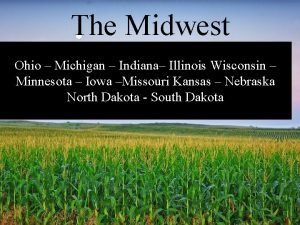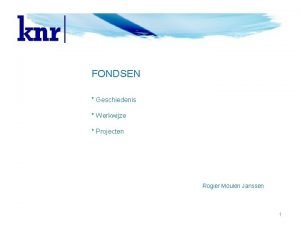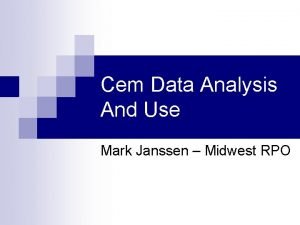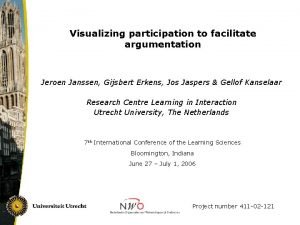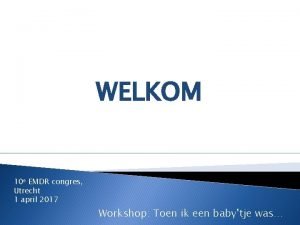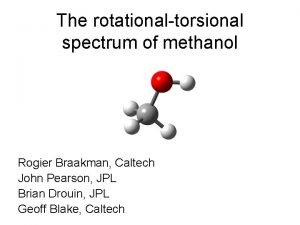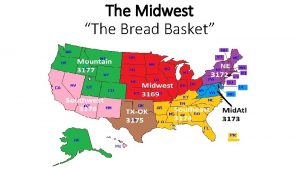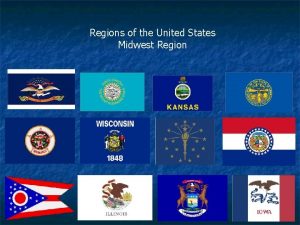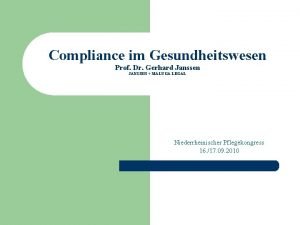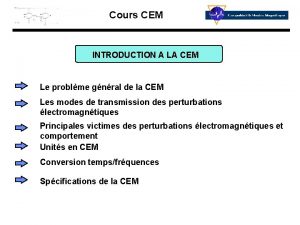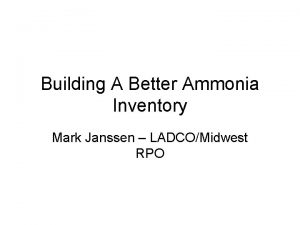Cem Data Analysis And Use Mark Janssen Midwest

























- Slides: 25

Cem Data Analysis And Use Mark Janssen – Midwest RPO

Emissions Modeling Domain

LADCO Inventory August 1999, January 2000 n Future CEM for annual 2002 run when data available. n Anthropogenic emissions based on USEPA’s 1999 National Emissions Inventory Version 2 n

Version 2 NEI Issues n Point Sources ¨ State ID’s replace ORIS ID’s ¨ Temporal still weak in NEI, Flat ¨ Few unreasonably high values in Florida, Michigan, and Colorado – Fixed/Removed ¨ EGU inventory 6 -7000 Tons/Day NOX lower than V 2 Draft (removed double counting)



Using the Raw CEM Data n Prepare NIF 2. 0 model-ready point source emission files based on 1998 - 2000 CEM data ¨ Need n to match ID’s with 1999 NEI at LADCO NEI base on State ID’s, CEM based on ORIS ID’s ¨ ¨ Huge Matching good for midwest, Poor elsewhere. 14 Gig per year in NIF.


Report of CEM with no match in NEI for August 1999 n n n n IL 5. 6 TPD IN. 6 TPD MI 13 TPD Eckert & Moores Park Station? OH 1. 5 TPD WI 1. 4 TPD That’s real good! Deleware/Nebraska lost over 50% of CEM Mass.

Dealing with Blanks n What to do about Missing or Zero Data ¨ Blank emission records common. ¨ New Tools replace blank records with zero emissions where there are pre-existing CEM records for that month ¨ Lessens overall Point NOX Tons/Day variability Base. B(24, 500 -37, 800)~32000 Midpoint NOX TPD n Base. D(21, 600 -32, 700)~25000 Midpoint NOX TPD n

Unadjusted CEM emissions not corrected for blanks






CEM Sensitivity (aug 99) PPB

Why build Temporal Profiles From CEM? n n n CEM data is great for base year model validation. Answers the question: Can this photochemical/emissions modeling system duplicate reality CEM Can Not be used in future year modeling. If facilty XYZ was closed on July 16 th 2002 will it be closed on July 16 th 2018? So we must create conceptual and computation models to mimic the behavior of facilities so we can build appropriate future year inventories.

EH Pechan Temporal Effects n n Based on 1998 - 2000 CEM data, create day-of-week and hourly profiles Put Pechan profiles into models as NIF 2. 0 Point “EP” record types. Ran with Version 2 of NEI 99 Raw Pechan data has Hourly Profiles by day of week and season ¨ LADCO n used Wednesday value for all days by season Raw Pechan data has day of week by season. ¨ Used Raw Pechan Data


Foundations of Future Temporal Models n n Using 1998 -2002 data to identify variations in load/emissions to classify as base load, peeking unit , or somewhere in between. Establish month of year and hour of day profiles to show variability in emissions base on CEM Apply temperature corrections on top of these to reflect daily min/max. Identify units that are likely to change from peaking to base load based on growth assumptions. Change their temporal attributes to match.

NOx as a Function of Temperature—Blr A

NOx as a Function of Temperature—Blr B

NOx as a Function of Temperature—Blr F

MWRPO Future directions Reanalyze 1998 – 2002 when it becomes available from EPA in RPO format. n Build profile generation tools we run ourselves to allow iterative process n Do new modeling (Base F? ) n Work with MWRPO stakeholders to see how our predictions work? n
 What is the midwest
What is the midwest Mbdh
Mbdh Zacharias janssen first microscope
Zacharias janssen first microscope Zacharias janssen
Zacharias janssen Cell theory timeline
Cell theory timeline Rogier moulen janssen
Rogier moulen janssen Dr ingrid janssen
Dr ingrid janssen Rogier moulen janssen
Rogier moulen janssen Crpc
Crpc Fileserver160
Fileserver160 Mosaico clinical trial
Mosaico clinical trial Rogier moulen janssen
Rogier moulen janssen Emdr congres
Emdr congres Zacharias janssen
Zacharias janssen Dr jennifer janssen
Dr jennifer janssen Henner janssen
Henner janssen Grid view medidata
Grid view medidata Fred janssen iclon
Fred janssen iclon Rogier moulen janssen
Rogier moulen janssen Janssen tv
Janssen tv Good afternoon slide
Good afternoon slide Rogier moulen janssen
Rogier moulen janssen Kurt becue
Kurt becue Breadbasket of the us
Breadbasket of the us What does the midwest symbolize in the great gatsby
What does the midwest symbolize in the great gatsby Midwestern region of the united states
Midwestern region of the united states
